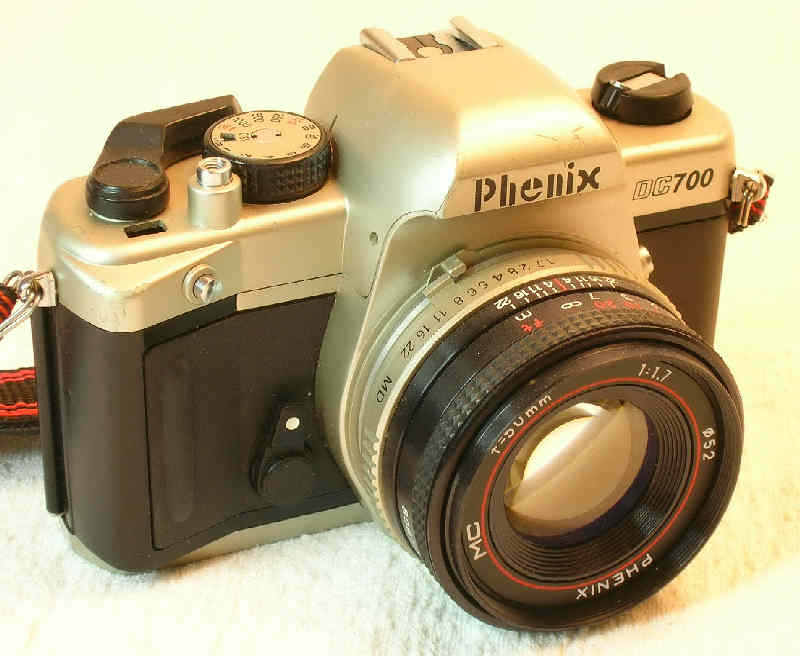
PHENIX

The name "Phenix" is often confused with the name "Phoenix". People just assume it is some sort of typo, but there are two different companies -- one named Phenix and the other Phoenix. Both companies made cameras that had the Minolta/Rokkor lens mount -- type DFB. But the similarities end there. None of the Phenix cameras are the same as the Phoenix cameras.
The few shutterbugs that have heard of Phenix only think of them as rangefinder camera manufacturers. And they made several very nice ones, such as the Phenix JG301.
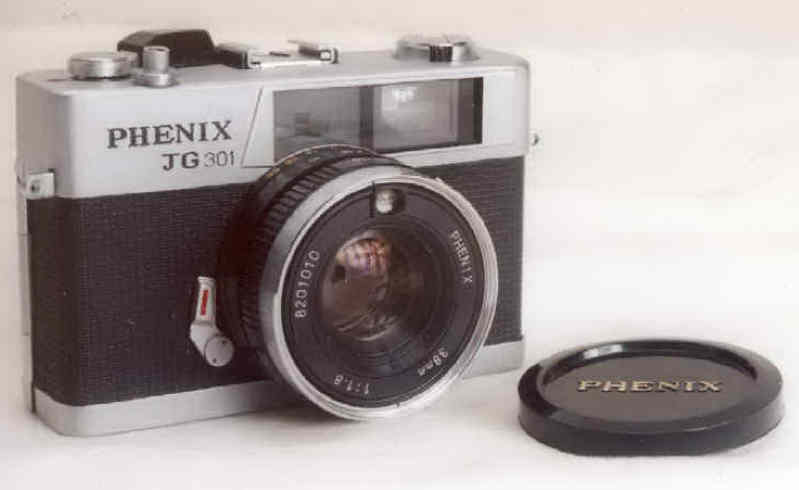
Not surprisingly, it is very similar to the amazing Minolta Hi-matic 7SII.
But at some point they decided to get into the SLR market. Who knows, perhaps they chose the "Phenix" name because it is so similar to "Phoenix", a well-known and respected Chinese SLR manufacturer. They could not use the "Phoenix" name, of course, but using the name "Phenix" might help sales somehow -- at least by confusing people! Who knows?
Some of their SLR cameras were available with different lens mounts (the most common mounts being Minolta, Pentax K, Nikon, and Contax/Yashica). They often used the same name on the different cameras, while some models were given different names when the lens mounts were different. This page (below) might help straighten some things out. For example, the Phenix DC303K (upper right -- probably their most popular non-Minolta model), DC818, DC828M, DC888KW (lower right), DC2000 (lower left), EK180, 10EK180C, 10EK180B, and 10EK180Z all had a Pentax K mount. The DC303N and DN60 (upper left) had a Nikon mount.
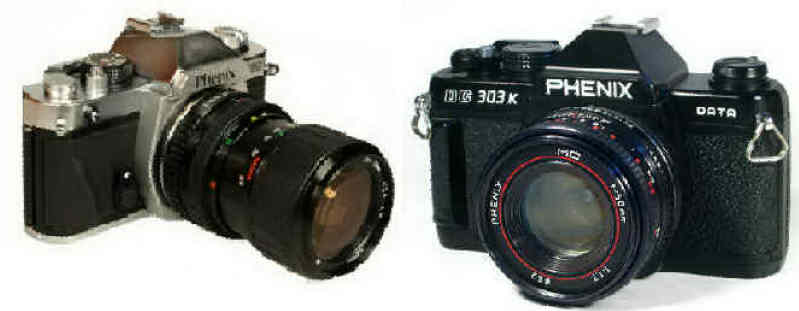
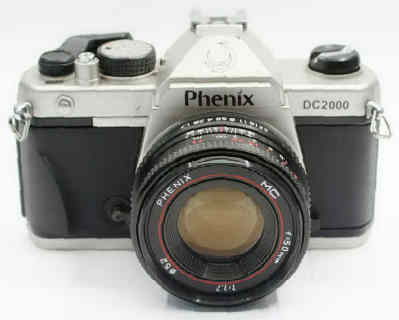

Only Phenix cameras that had a Minolta Rokkor lens mounts are listed below.
In 1965, the Phenix Optical Co., Ltd was created. In 1987, it moved to its new factory in the city of Shangrao in Jiangxi Provice in south-eastern China -- halfway between Shanghai and Hong Kong. Over time, it expanded even more with factories in Qingpu, Guangdong, and Shanghai provinces. It is not known if different cameras were made in different factories or if the different factories made different camera parts, lenses, etc.
An interesting note about all of the Phenix-Minolta-mount cameras is that they all had vertical, metal shutters -- some with speeds to 1/2,000 -- but none of them needed a battery to power the shutter! The battery is only used for the meter and the LED display in the viewfinder. They all use TWO A76 batteries, but they operate perfectly well without them -- in un-metered, manual mode. On the left is a camera with a standard Minolta/Seagull, electronic, horizontal shutter. On the right is a Phenix mechanical, vertical shutter. They are easy to identify by the two small arms on the right side of the shutter blades -- plus one is cloth, and the other metal.
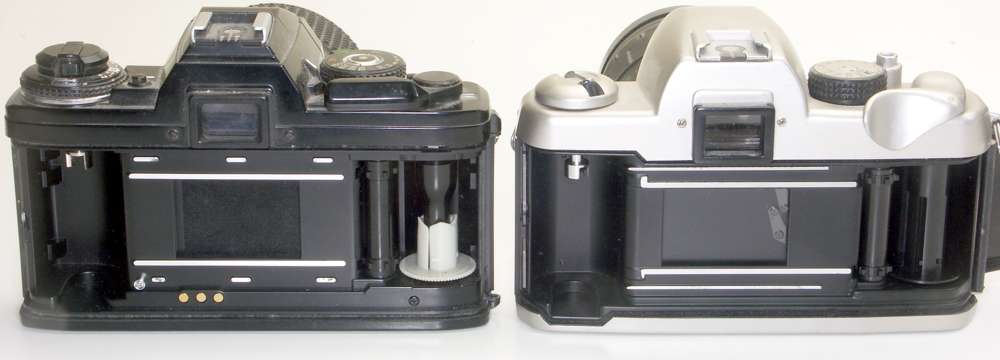
Another interesting point is that NONE of the Phenix cameras had an option for a film winder or motor drive. While this obviously kept the price of the cameras down, it would have been a nice option on at least some of their higher-end models.
Phenix made several lenses with the Minolta Rokkor lens mount, but also with
other mounts. To confuse things even more, so did Phoenix. So
you can see a Phoenix camera with a Phenix lens or a Phenix camera with a
Phoenix lens (see below). The most frequently seen Phenix lenses are:
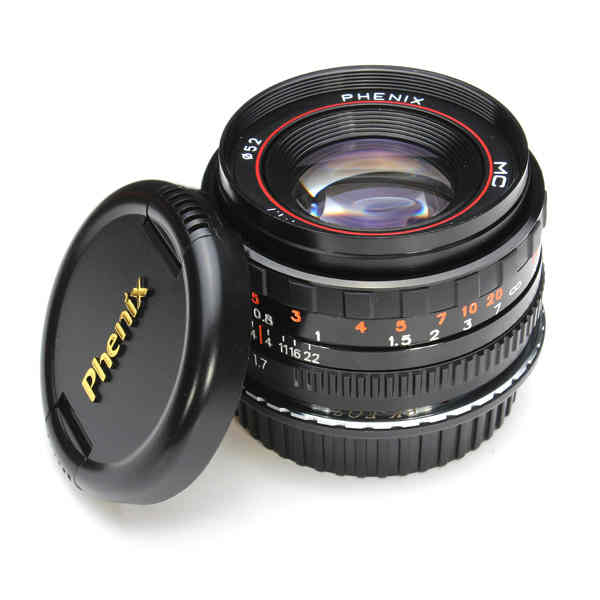
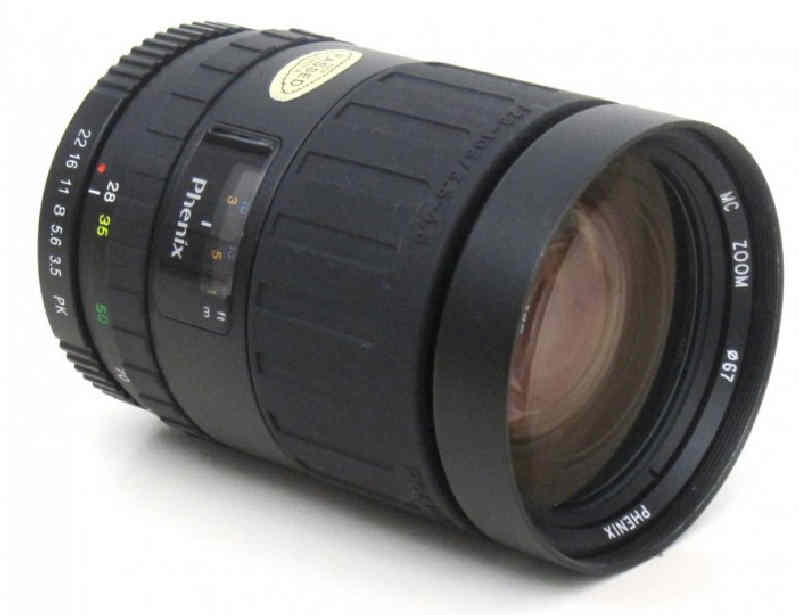
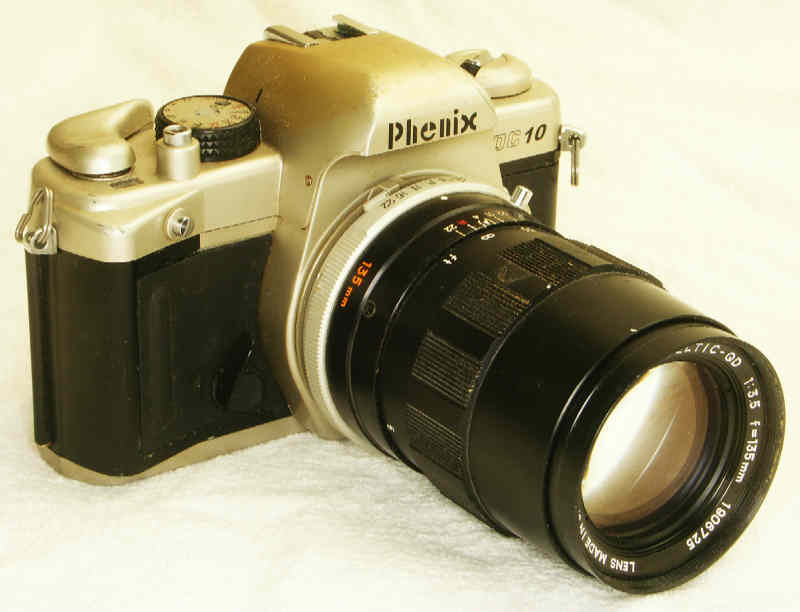
Like some of the other models below, the DC10 was available in at least three lens mounts -- Minolta SR/MC, Pentax-K and 42mm Universal screw. Despite the low designation, it has lots of features. Nice, well-made camera. It has speeds of B, 1 - 1/1,000. It also has a super-easy multiple exposure button which naturally falls under your second finger. It also has TTL metering with ISO settings from 25 - 3200. Flash synch is at a fast 1/125. Manual exposure mode only using three red and green LED's in the viewfinder. The top LED is a red +, while the bottom LED is a red -. A green LED will light in the middle if the exposure is correct by adjusting the shutter speed or f-stop. It's fast and simple, but their is no exposure display of the shutter speed or the f-stop in the viewfinder. The viewfinder does sport a 45 degree split-image rangefinder, as well as the microprism collar. The camera also has a stop down button, self-timer, hot shoe and X-synch plug as well as a tripod socket and cable release connection, of course. There is no motor-drive option, though. The camera has an OFF setting on the shutter speed dial -- which was replaced by the 1/2,000 speed setting on the DC20. Otherwise, they are exactly the same camera, although the DC10 was undoubtedly sold at a slightly lower price than the DC. Perhaps it was also marketed with a less expensive lens, such as the 50mm f1.7 instead of a zoom lens. In any event, it is perhaps the hardest Phenix SLR to find -- other than the DC900.
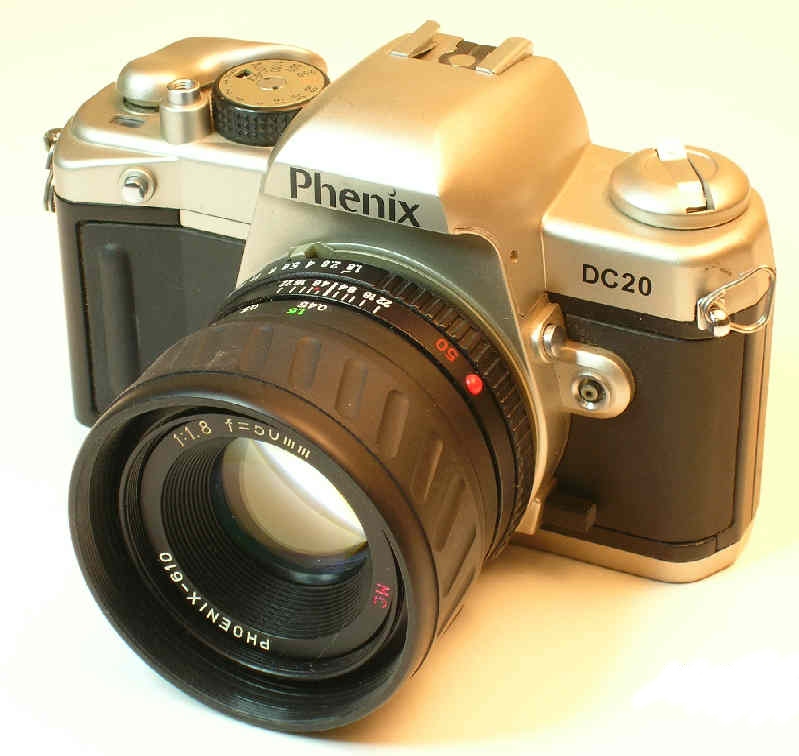
It is an improved version of the DC10 with speeds to 1/2,000. It is normally seen with 28-70mm (f3.4-4.8) zoom lens. The body is available in champagne silver or black plastic. It is the same camera as the Braun SR2000 and the Phenix 901 -- except that the film advance lever is shaped a little differently.
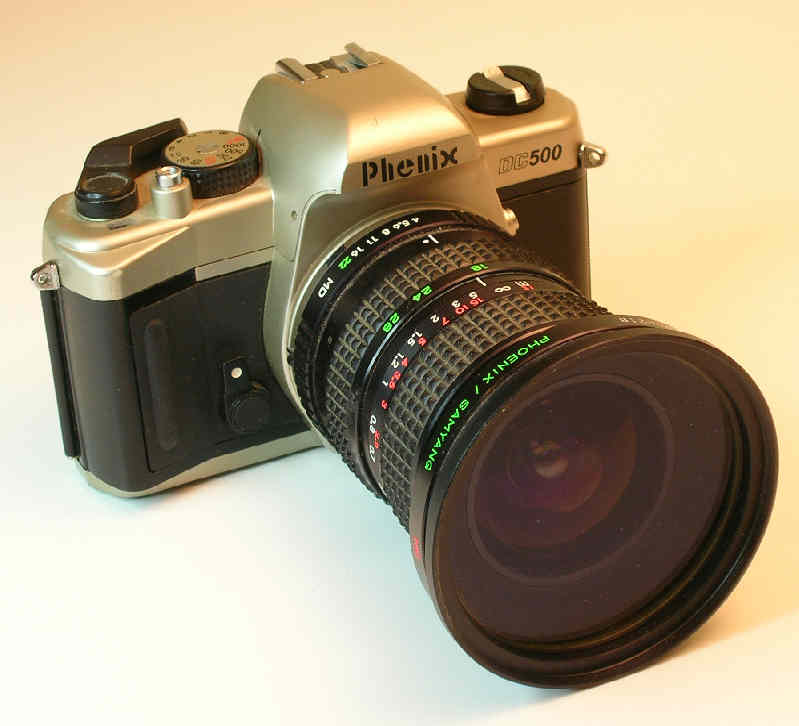
This is kind of an odd-ball. It is the lowest Minolta-mount SLR camera on the Phenix totem pole, but it has its strengths. First, it has an all metal, vertical shutter that does not need a battery. It has a battery chamber but the batteries are not used by the shutter or the meter -- because it doesn't have a meter. So what does the battery do? It just tells you that the camera is ready to take pictures. The shutter speed dial has an OFF setting that prevents the shutter from being released. When this is taken off the OFF setting and the shutter release is pressed slightly, a red LED lights up in the viewfinder. That's all the battery does -- so one set of batteries should last a lifetime! Hot shoe and flash synch at 1/125. It even has a stop-down button! You have to determine the exposure manually and set the shutter speed and f-stop. So overall, it is a very nice manual-only camera.
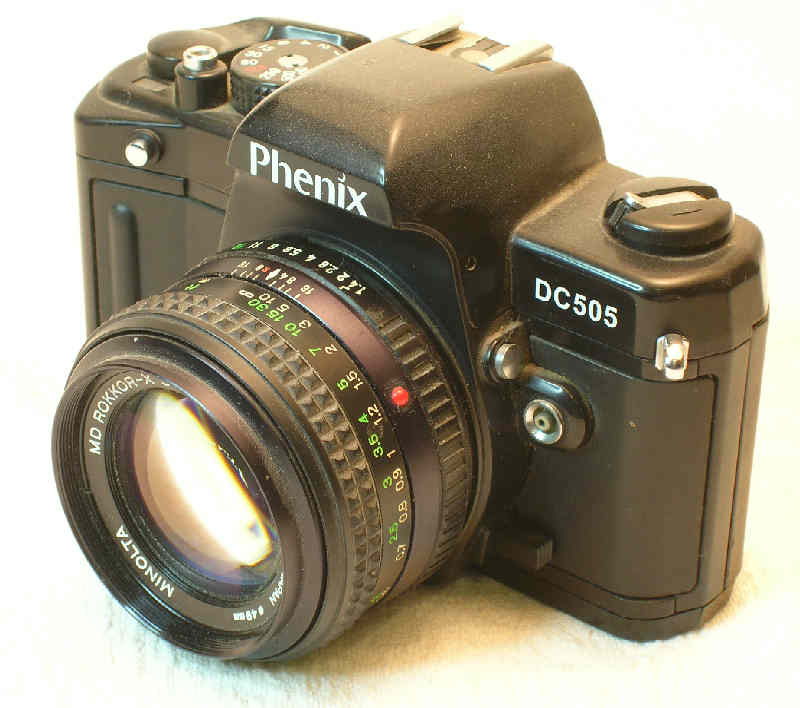
It's the same as the DC500 but it adds multiple exposure capability and a PC plug. In short, a full-featured, manual-only camera -- OK, so there is no motor drive option, but since you are operating in full-manual mode that is probably not an issue.
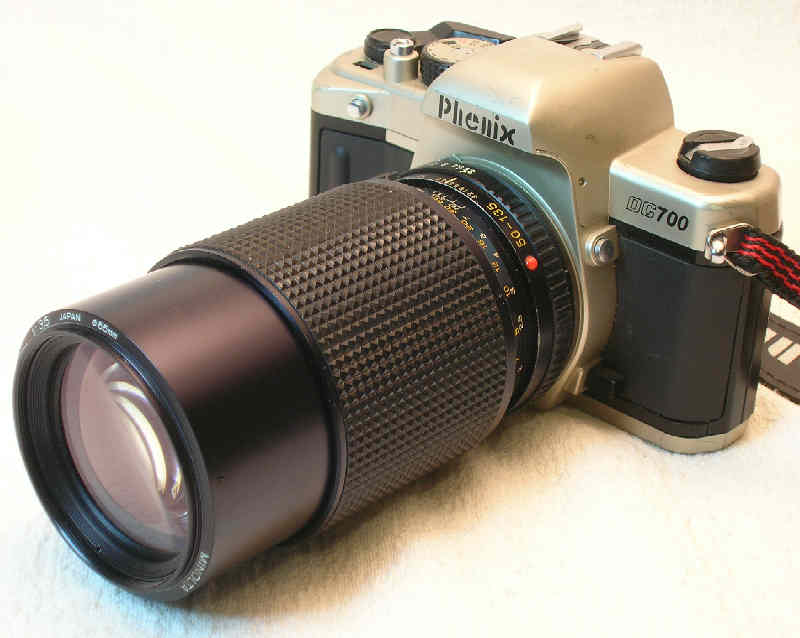
This is an improved version of the DC500 with TTL metering. Still, it is a manual-only camera without auto-exposure. Metered manual mode uses three red and green LED's in the viewfinder. The top LED is a red +, while the bottom LED is a red -. A green LED will light in the middle if the exposure is correct -- by adjusting the shutter speed or f-stop. It's fast and simple, but their is no exposure display of the shutter speed or the f-stop in the viewfinder. The viewfinder does sport a 45 degree split-image rangefinder, as well as the microprism collar.
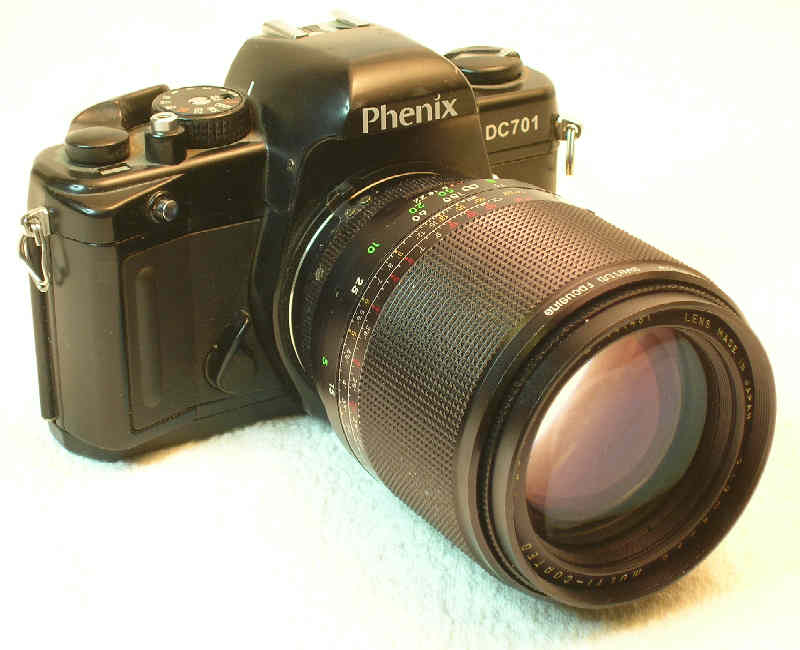
It is a DC700 but with a PC contact for non-hot shoe flash use -- oh yeah, and a slightly different self-timer lever.
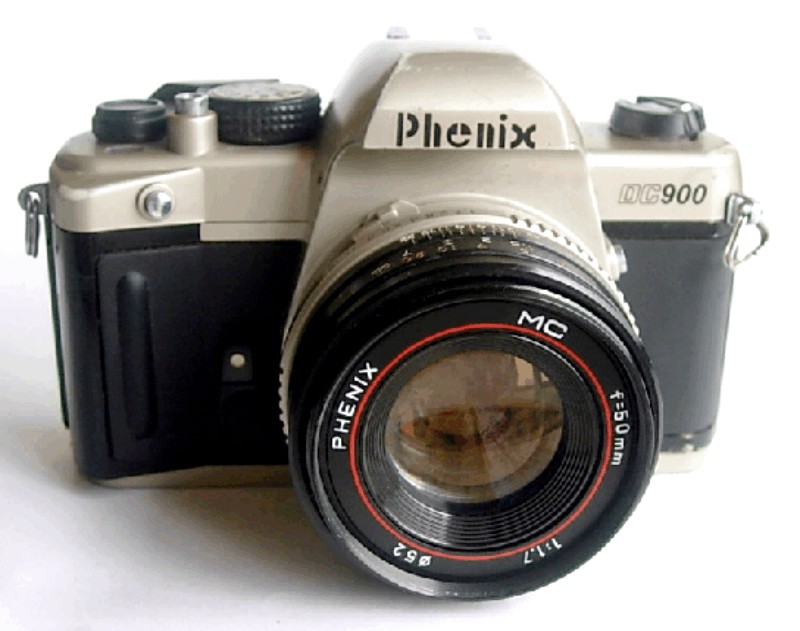
Like the Phenix DC500 vs DC505, and the Phenix DC700 vs DC701 cameras, the DC900 is a slightly modified DC901. Let's see. They both have a 1/2,000 shutter speed.
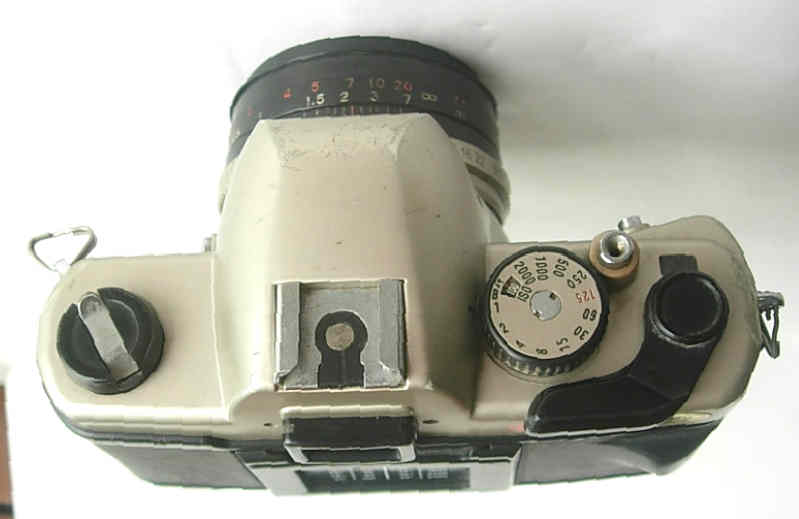
They both have multi-exposure capability. They both lack a motor drive option.
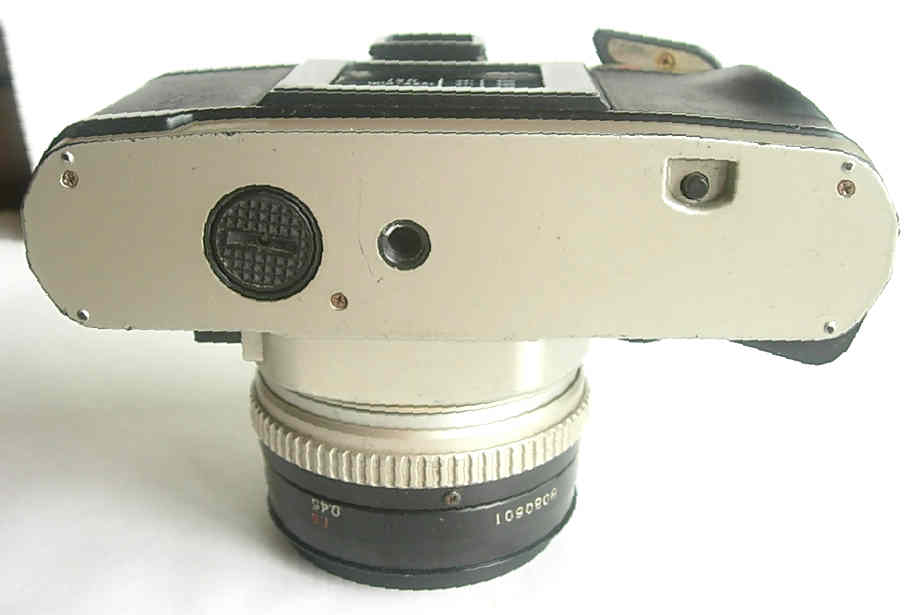
So the DC900 is a DC700 with shutter speeds to 1/2,000 -- or a DC901 without a PC contact. I guess it all depends on your point of view.

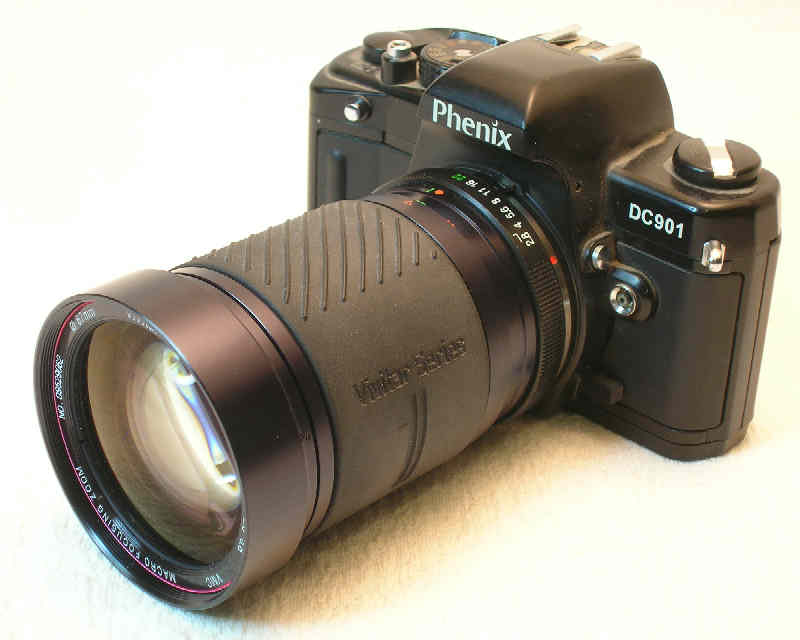
It is a DC701 with shutter speeds to 1/2,000. For some reason the ISO setting is changed to 25 - 320. It may have only been available in black. It is the same as the Braun SR2000 and the Phenix DC20.
| Shutter | Shutter speeds |
Flash synch speed |
TTL meter- ing? |
ISO settings |
Auto expo- sure? |
AE lock? |
View- finder info |
Flash shoe |
Sensa- switch? |
PC plug? |
Multi- expo- sure? |
Cable release plug? |
Stop down button? |
Self timer? |
Mirror lock-up? |
Motor drive option? |
Battery used for |
Film indicator |
|
| Phenix DC20 | metal, vertical |
1-2,000 B |
1/125 | Y | 25- 3200 |
N | N/A | three LEDs |
Hot | N/A | Y | Y | Y | Y | Y | N | N | meter | Film tab holder |
| Phenix DC500 | metal, vertical |
1-1,000 B |
1/125 | N | N/A | N/A | N/A | one LED |
Hot | N/A | N | N | Y | Y | Y | N | N | LED | Film tab holder |
| Phenix DC505 | metal, vertical |
1-1,000 B |
1/125 | N | N/A | N/A | N/A | one LED |
Hot | N/A | Y | Y | Y | Y | Y | N | N | LED | Film tab holder |
| Phenix DC700 | metal, vertical |
1-1,000 B |
1/125 | Y | 12- 1600 |
N | N/A | three LEDs |
Hot | N/A | N | N | Y | Y | Y | N | N | meter | Film tab holder |
| Phenix DC701 | metal, vertical |
1-1,000 B |
1/125 | Y | 12- 1600 |
N | N/A | three LEDs |
Hot | N/A | Y | Y | Y | Y | Y | N | N | meter | Film tab holder |
| Phenix DC900 (???) | metal, vertical |
1-2,000 B |
1/125 | Y | 25- 3200 |
N | N/A | three LEDs |
Hot | N/A | Y | N | Y | Y | Y | N | N | meter | Film tab holder |
| Phenix DC901 | metal, vertical |
1-2,000 B |
1/125 | Y | 25- 3200 |
N | N/A | three LEDs |
Hot | N/A | Y | Y | Y | Y | Y | N | N | meter | Film tab holder |